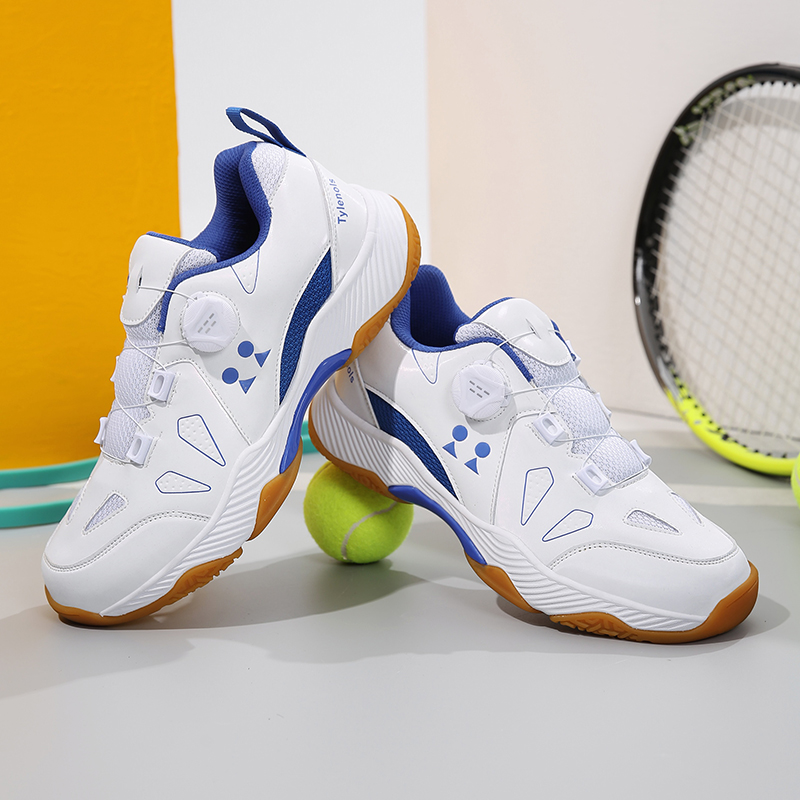
Proper maintenance and care of your pickleball shoes are essential to ensure their longevity, performance, and overall appearance. Regular cleaning and maintenance not only extend the life of the shoes but also prevent odor, bacterial growth, and potential health issues. This essay will outline a comprehensive guide on how to properly clean and maintain your pickleball shoes, including considerations such as materials, cleaning products, drying techniques, storage, and replacement. By following these steps, players can keep their shoes in top condition, ensuring optimal performance and comfort on the court.
I. Understanding the Materials: Before cleaning your pickleball shoes, it’s important to understand the materials they are made of. Most pickleball shoes are made of synthetic materials such as mesh, nylon, or polyester, and may include rubber or foam for cushioning. Some shoes may also have leather or suede accents. Proper cleaning methods will depend on the materials of the shoes, and it’s essential to check the manufacturer’s care instructions before cleaning.
II. Cleaning Products: When it comes to cleaning pickleball shoes, it’s essential to use the right cleaning products to avoid damaging the materials. Some effective cleaning products include:
- Mild Soap: Use mild soap, such as dish soap or laundry detergent, and mix it with water to create a gentle cleaning solution.
- Vinegar: Vinegar is an effective natural cleaner that can remove odor and disinfect shoes. Mix equal parts of water and vinegar and use a cloth to clean the shoes.
- Baking Soda: Baking soda is another natural cleaning agent that can absorb odor and moisture from the shoes. Sprinkle a small amount of baking soda inside the shoes and let it sit for several hours before shaking it out.
- Stain Remover: For stubborn stains, consider using a specialized stain remover designed for shoes. Be cautious not to use any harsh chemicals that may damage the shoes.
III. Cleaning Process: Once you have gathered the appropriate cleaning products, you can begin the cleaning process. The following steps can help ensure a thorough clean:
- Remove Excess Dirt: Use a soft-bristled brush or cloth to remove any loose dirt or debris from the shoes. Be gentle to avoid any damage to the materials.
- Apply Cleaning Solution: Apply the cleaning solution to a soft cloth and gently wipe the shoes, focusing on any areas with stains or discoloration. Avoid saturating the shoes with too much solution, as it may cause damage.
- Rinse and Dry: After cleaning, rinse the shoes thoroughly with clean water to remove any leftover cleaning solution. Use a clean cloth to wipe away excess water and allow the shoes to air dry naturally. Do not place them near direct heat sources, as excessive heat may damage the materials.
IV. Drying Techniques: Proper drying techniques are crucial to prevent damage and odor buildup in your pickleball shoes. Consider the following tips:
- Air Drying: Allow your shoes to air dry naturally after each use. Avoid placing them near direct heat sources, as excessive heat can deform the materials.
- Stuff with Newspaper: Stuff the shoes with newspaper or paper towels to help absorb moisture and maintain their shape while drying.
- Use a Shoe Dryer: Consider using a specialized shoe dryer designed to dry shoes quickly and efficiently. These devices use heated air to dry the shoes without damaging the materials.
V. Storage: Proper storage of your pickleball shoes is essential to maintain their shape and condition. Consider the following tips:
- Store in a Cool, Dry Place: Store your shoes in a cool, dry place away from direct sunlight or heat sources that may damage them.
- Use Shoe Trees: Consider using shoe trees to help maintain the shape of the shoes and prevent deformation.
- Alternate Shoes: If possible, alternate between multiple pairs of pickleball shoes to allow each pair to fully dry out and reduce the chances of odor and bacterial growth.
VI. Replacement: Even with proper maintenance and care, pickleball shoes will eventually wear out and require replacement. Signs of wear and tear may include flattened cushioning, worn outsoles, or torn uppers. When these signs become evident, it may be time to consider replacing your pickleball shoes to ensure optimal performance and safety.
Conclusion: Proper cleaning and maintenance of your pickleball shoes are essential to prolong their life, performance, and appearance. By understanding the materials, using appropriate cleaning products, employing proper drying techniques, storing them correctly, and replacing them when necessary, players can keep their shoes in top condition. By following these steps, players can focus on their game without distraction, knowing they have taken the necessary steps to maintain their equipment.